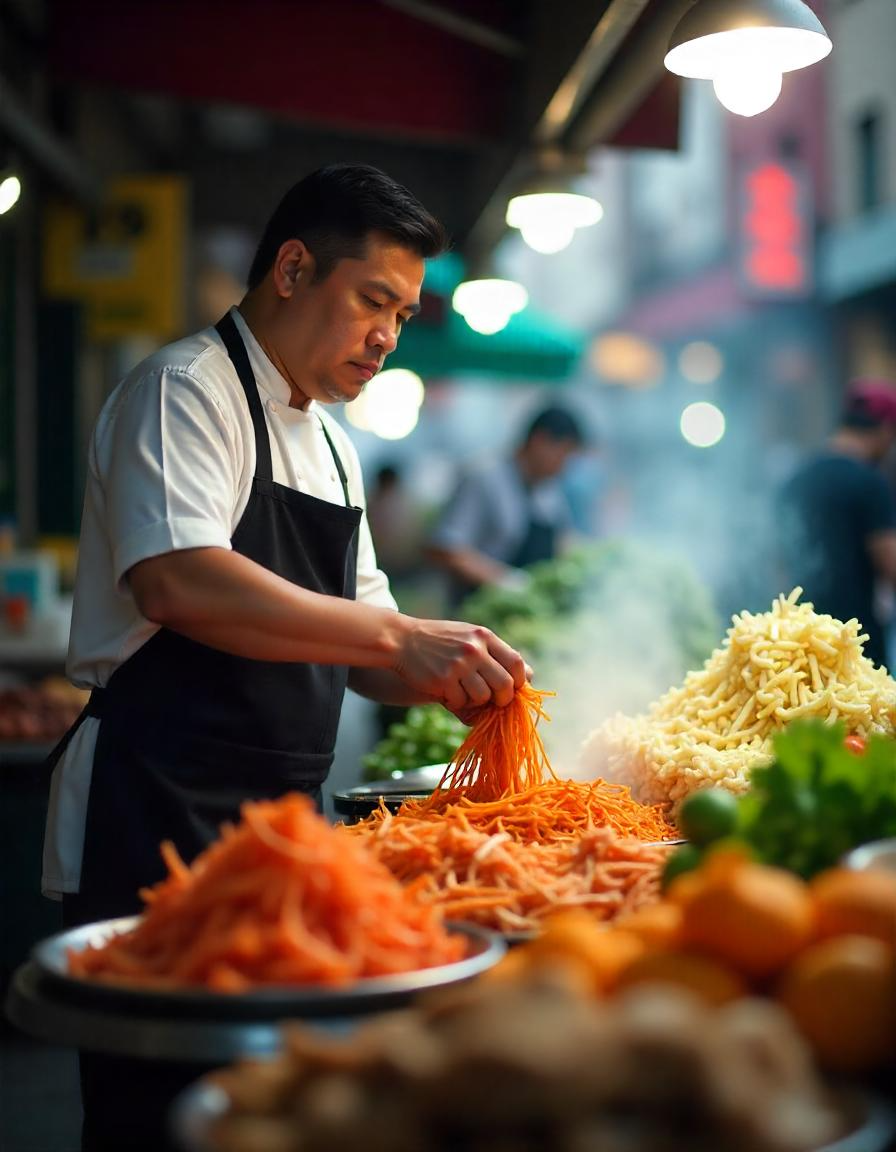Chinatown Hawker Leftovers Consumption: A Sustainable Approach to Food Waste

Introduction of Chinatown Hawker Leftovers Consumption
Chinatown, a vibrant and bustling enclave in many important towns around the arena, is renowned for its wealthy cultural history, colorful festivals, and, most substantially, its delicacies. From dim sum to roast duck, Chinatown’s hawker stalls and food courts offer a gastronomic revel that attracts locals and tourists alike. However, amidst the culinary delights lies a growing issue: food waste. In recent years, the hassle of meal waste has won considerable interest, prompting organizations to search for sustainable answers. One such answer that has emerged is the consumption of hawker leftovers in Chinatown. This article delves into Chinatown hawker’s leftover intake, exploring its implications, benefits, and stressful situations.
The Problem of Food Waste in Chinatown
The Scale of Food Waste
Food waste is a global issue, and Chinatown is no exception. According to recent research, most food prepared using hawkers and food places in Chinatown has become unnatural. This waste is not the simplest, but it represents the loss of valuable assets and environmental decline. The decomposition of food waste in landfills produces methane, a potent greenhouse fuel that increases weather changes.
Causes of Food Waste in Chinatown
Many factors contribute to the waste of food in Chinatown. One of the primary objectives is the sheer range of food prepared by the hawkers to complete high calls from customers. Additionally, the cultural practice of ordering more food than necessary often leads to wide remaining as a sign of hospitality. In addition, food enhances the knowledge and lack of infrastructure for waste control.
The Emergence of Hawker Leftovers Consumption
A Cultural Shift
In response to the growing situation over food waste, a cultural shift has begun in Chinatown. More individuals and businesses recognize the cost of consuming hawker leftovers to lower food waste. This shift is driven by environmental attention, financial issues, and a desire to keep cultural history.
Community Initiatives
Several community projects have emerged to sell the consumption of hawker leftovers. These projects range from food rescue packages that gather and redistribute surplus food to academic campaigns that improve recognition of the significance of decreasing food waste. Some agencies have even established partnerships with hawkers to ensure that leftover food is applied efficiently.
Benefits of Consuming Hawker Leftovers
Environmental Impact
One of the most widespread benefits of hawkers left is the high-quality effect on the environment. By reducing the amount of food that ends up in the landfill at the end, we can reduce the manufacture of methane and various greenhouse gases. This, in turn, facilitates reduced weather change and promotes a more durable future.
Economic Savings
Consuming hawker leftovers additionally gives economic benefits. It allows people to enjoy scrumptious food at a fraction of the cost. For hawkers, it reduces the monetary loss associated with unsold meals. Network tasks that redistribute surplus food can generate revenue and create process opportunities.
Cultural Preservation
Chinatown’s culinary background is a critical part of its identity. By eating hawker leftovers, we will help preserve this heritage. Leftover food frequently consists of conventional dishes that might not be as popular as mainstream alternatives; however, they are vital to Chinatown’s culinary panorama. We will ensure that those dishes remain exceeded through generations by valuing and eating them.
Challenges and Considerations
Food Safety Concerns
One of the primary challenges related to consuming hawker leftovers is ensuring meal protection. Leftover meals must be treated and stored nicely to prevent infection and spoilage. Community projects and agencies should adhere to strict food protection recommendations to ensure that the meals they distribute are safe for intake.
Stigma and Perception
Another project is overcoming the stigma associated with ingesting leftovers. In some cultures, eating leftovers is seen as a signal of poverty or loss of resources. Changing this belief requires education and awareness campaigns highlighting the environmental and monetary benefits of eating leftovers.
Logistical Issues
The logistics of gathering, storing, and allotting hawker leftovers may be complicated. It requires coordination among hawkers, community agencies, and volunteers. Additionally, there may be a need for infrastructure, including refrigeration and transportation, to ensure that the meals stay fresh and secure for the duration of the redistribution method.
Case Studies: Successful Initiatives in Chinatown
Food Rescue Organizations
Several food rescue companies have effectively implemented programs to accumulate and redistribute hawker leftovers in Chinatown. These groups paintings carefully with hawkers to perceive surplus food and ensure it is distributed to needy people. One such organization, “Chinatown Food Rescue,” has partnered with over 50 hawkers and redistributed many meals to neighborhood shelters and network facilities.
Educational Campaigns
Educational campaigns have additionally played an essential function in promoting the consumption of hawker leftovers. These campaigns intend to highlight the environmental and economic advantages of reducing food waste. They additionally offer realistic hints on how to keep and devour leftovers properly. One splendid campaign, “Save Our Hawker Heritage,” has reached hundreds of citizens and traffic through workshops, social media, and network events.
Collaborative Efforts
Collaborative efforts among hawkers, community companies, and local governments have been validated to address food waste in Chinatown effectively. For example, the “Chinatown Sustainable Food Initiative” is a collaborative attempt that brings together stakeholders to broaden and implement techniques for decreasing food waste. This initiative establishes a centralized meals redistribution hub, in which hawker surplus meals are accrued and distributed to the ones in need.
The Future of Chinatown Hawker Leftovers Consumption
Technological Innovations
Technological innovations can revolutionize the way we approach meals waste in Chinatown. For example, cell apps that connect hawkers with consumers searching out discounted leftover food are gaining a reputation. These apps now not handiest reduce food waste but also provide extra revenue circulation for hawkers. Additionally, improvements in the food upkeep era, including vacuum sealing and clever refrigeration, can help make the shelf life of leftover meals bigger.
Policy and Regulation
Government rules and rules can play a significant characteristic in promoting the consumption of hawker leftovers. For example, implementing tax incentives for businesses that donate surplus food can encourage more hawkers to participate in food rescue packages. Additionally, stricter guidelines on food waste disposal can incentivize organizations to undertake more sustainable practices.
Community Engagement
Community engagement is critical for any initiative aimed at lowering food waste. By involving residents, site visitors, and neighborhood agencies in the verbal exchange, we can foster a collective responsibility experience and inspire more extraordinary human beings to participate in efforts to eat hawker leftovers. Community events, such as meal galas and cooking workshops, can serve as systems for raising focus and selling sustainable practices.
Conclusion
The consumption of hawker leftovers in Chinatown represents a sustainable approach to addressing the difficulty of food waste. By lowering the number of meals that ultimately end up in landfills, we can mitigate the environmental effect of food waste, gain monetary economic monetary financial savings, and keep Chinatown’s culinary history. However, this method is not without its traumatic situations.
Ensuring meal safety, overcoming stigma, and addressing logistical troubles are critical to the fulfillment of tasks geared toward selling the consumption of hawker leftovers. We can create a sustainable future for Chinatown through community responsibilities, academic campaigns, and collaborative efforts. Technological enhancements, supportive tips, and lively network engagement will be essential in shaping this destiny.
As we continue to find and enforce solutions to lessen food waste, consuming hawker leftovers is a promising and impactful exercise that blesses the surroundings and the network. In the give up, the journey inside the route of a more excellent, sustainable Chinatown is a collective try. By valuing and eating hawker leftovers, we can honor the wealthy culinary traditions of Chinatown while taking enormous steps towards a more sustainable and equitable future.
Read More: WGN News
